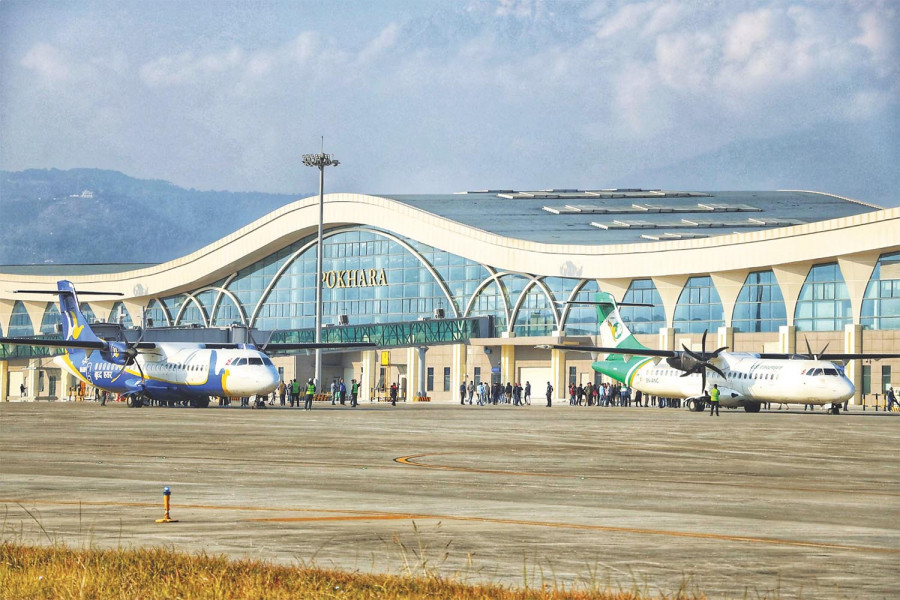Columns
Cautionary tale of Pokhara airport
Kathmandu has been trying to control how Pokhara airport will be used and what it will give the country.
Bhojraj Poudel
How we welcome and utilise foreign direct investment and development aid from different countries makes a difference. The development of Pokhara Regional International Airport (PRIA) is a case that we need to look at carefully. PRIA was built with a commercial loan from China. What fruits we try to reap from this airport will have a long-term impact on how we secure funds for the development of other infrastructures. How we operate and manage PRIA shall determine the benefits of the much-touted project.
Ideally, PRIA should have been a departure point for us to develop other large public infrastructure projects. But initial indications are not very encouraging towards that end. The airport, which was supposed to be a complementary cushion for international flights, has fallen into an unnecessary geopolitical debate compounded with unclear flight paths for international flights. Nepal’s commitment to pay back the $215 million loan in 20 years makes it hard to imagine how this project will help transform the economy.
Source of pride
In the federal landscape, Pokhara is not just a touristic place but also the capital of Gandaki province. Looking at the project from a provincial perspective, PRIA should have been a source of pride for Gandaki. But no enthusiasm has been expressed from the provincial level so far. This tells us that the federal government has been trying to control how it will be used and what the project will give the country. The Civil Aviation Authority of Nepal (CAAN) has made the whole process an unresolved and immature task by letting the airport be used without completing due diligence. Some experts, even from government agencies, are hesitant to state that the project will be a game-changing infrastructure. This leads all to make a common judgement that the airport was built with a political aspiration rather than an economic calculation.
People aspire to get quality services regardless of how a project is built and what challenges the government will face to pay back the loan. Our common problem is that we don’t allow debates to be conducted over issues that are critical for the larger economy of the country. Sometimes, we get swayed by unnecessary debates initiated for the interest of small groups. That’s why it is vital that we review the existing parliamentary committees and do a thorough analysis of the need for additional committees so that adequate discussions are held among lawmakers over the issues, challenges and utilisation of resources.
As the country has reached a point of financial crisis, we have to be careful about managing financial resources. Following the general elections and the formation of a new government, incoming Finance Minister Bishnu Poudel inherited multi-faceted challenges and critical problems in the economy. He said he wouldn’t issue a white paper on the economy as he didn't want to expose its status and spread anxiety among the people.
Big expectations
Officials at the Ministry of Finance are facing problems making the budget because of a large gap in financial resources. People have big expectations from the new government, but there are almost no resources for even a bare minimum of programmes.
Recurrent expenditure has overshot revenue collection. The question is how we will manage the gap and who will be funding other programmes. Another question is where we will get funding to develop public infrastructures that will take us beyond our current position.
Banks and financial institutions have been struggling with a liquidity crisis for more than a year. The government hasn’t been able to fix the problem despite the challenges the people are facing to obtain bank loans even for small projects. The interest rates are not favourable for businesses to survive.
Against this backdrop, the way to overhaul and change the course of the economy would be to issue local government bonds. An institution must be set up to guide local governments to manage the bonds and streamline the funds for investment in productive sectors. We can draw lessons from other countries that have used this method to generate investment.




 9.12°C Kathmandu
9.12°C Kathmandu













%20(1).jpg&w=300&height=200)

